Last time we saw the evolution from the muzzle-loading smoothbores of Nelson's day to the turret-mounted breechloaders of the 1870s. But the best way to carry heavy guns to sea remained controversial, and the 1880s saw considerable strife between advocates of the turret and advocates of the barbette. The turret was considerably better-protected, but couldn't be carried high in the ship due to topweight concerns. The barbette left the gun exposed, but was significantly more effective in bad weather, as it kept the guns away from the spray and surf.
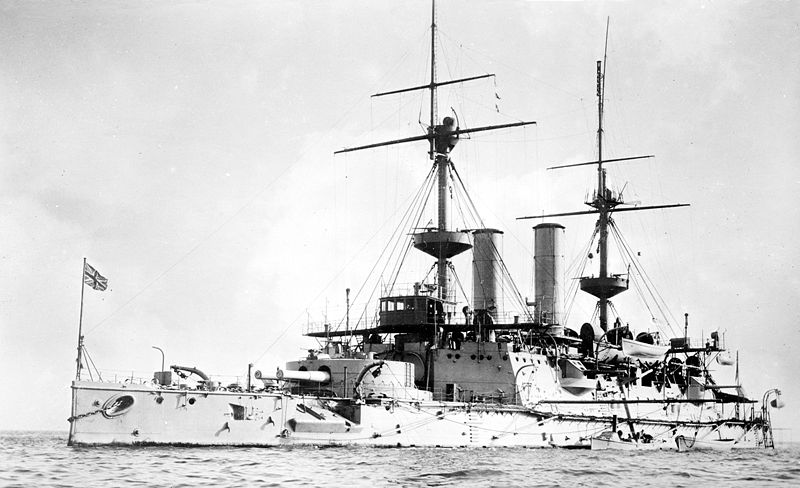
HMS Hood, the last British low-freeboard turret ship
In the early part of the decade, the open loading position of the barbette worked reasonably well. The only weapon of note was the heavy gun, which fired slowly and was likely as not to be aimed at the waterline. However, the development of the quick-firing gun soon made the open barbette untenable. Some nations, notably France and Russia, had installed thin (1-3") hoods on their barbettes from quite early on. The British had not, apparently under the impression that it would hinder their men's combat effectiveness somehow.1 However, the development of 6" QF (Quick-Firing) guns, capable of 5-10 rounds per minute, meant that exposed positions rapidly became vulnerable.
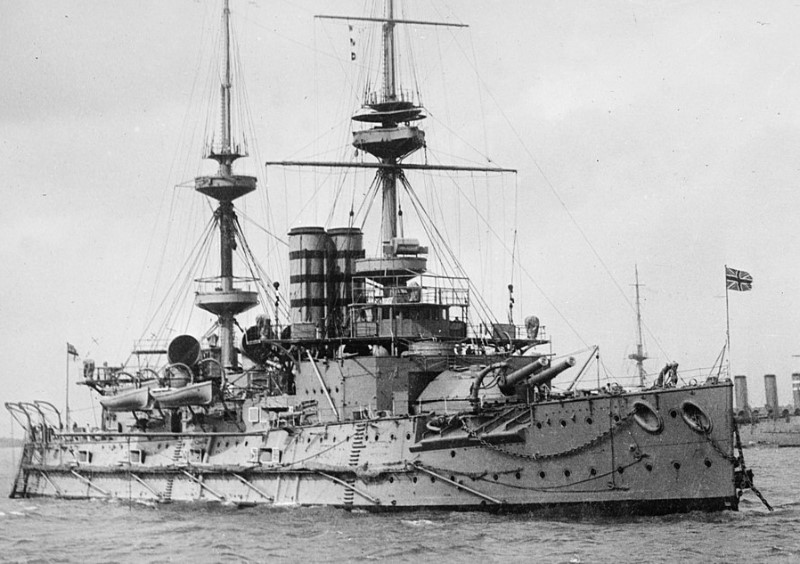
HMS Mars of the Majestic class
The traditional story of the transition from the mounts of the 1880s to the 1890s is that the British adopted barbettes for the Royal Sovereign class, proving the value of high gun positions. They then proceeded to fit gunhouses to the following Majestic class, which produced a new type of mount, distinct from the turret. The barbette/gunhouse then won out over the proper turret, except for France and Russia, who used it until the start of the dreadnought era.

I don't believe this to be true. For reasons I have detailed at great length in a separate post, I believe that the barbette and turret merged as improvements in armor allowed sufficient armor to be carried higher in the ship, regardless of the exact form. The French and Russian ships carried their turrets at approximately the same height as the British, and weren't noticeably heavier, either. The US raised its turrets without going through open barbettes, and the internal architecture remained the same throughout the pre-dreadnought era. There were national differences in design, but nothing large enough to draw a sharp distinction between the two types as most reference books do.

Diagram of BL 12" Mk VIII gun
One major innovation of the early pre-dreadnought era was all-angle loading. Most turrets until the mid-1890s had their rammers mounted outside the rotating structure, which meant that it had to traverse back to a fixed orientation to load. A partial solution to this was to carry a few rounds in the rear of the turret, which could be loaded by a secondary rammer in an emergency, while most of the ammunition was only accessible in the fixed loading position. This proved unsatisfactory, and the British continued to improve all-angle loading, with at least a theoretical capability in the last two units of the Majestic class, Caesar and Illustrious.
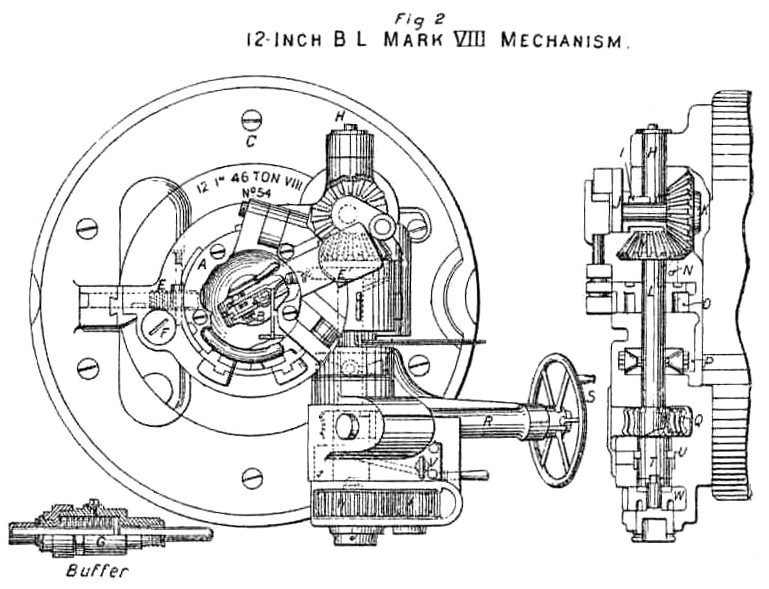
Breech mechanism of BL 12" Mk VIII
An even more significant innovation of the Majestics was their BL 12" Mk VIII guns. These weapons were the first big guns to use cordite, one of the first smokeless powders. This meant an even longer barrel of 35 calibers, and an increase in muzzle velocity from the 614 m/s of the 13.5" guns of Royal Sovereign to 719 m/s. In the long run, the spaghetti-like cordite was not a particularly good propellant, as it burned very hot, limiting gun life, and had a disturbing tendency to explode. They also were the first heavy wire-wound guns. To deal with the greater stresses of the cordite, the British had begun building their guns by wrapping wire around the inner ("A") tube, then putting another tube over that. This gave great radial strength, at a cost in stiffness, so that some early wire-wound guns suffered from muzzle droop.
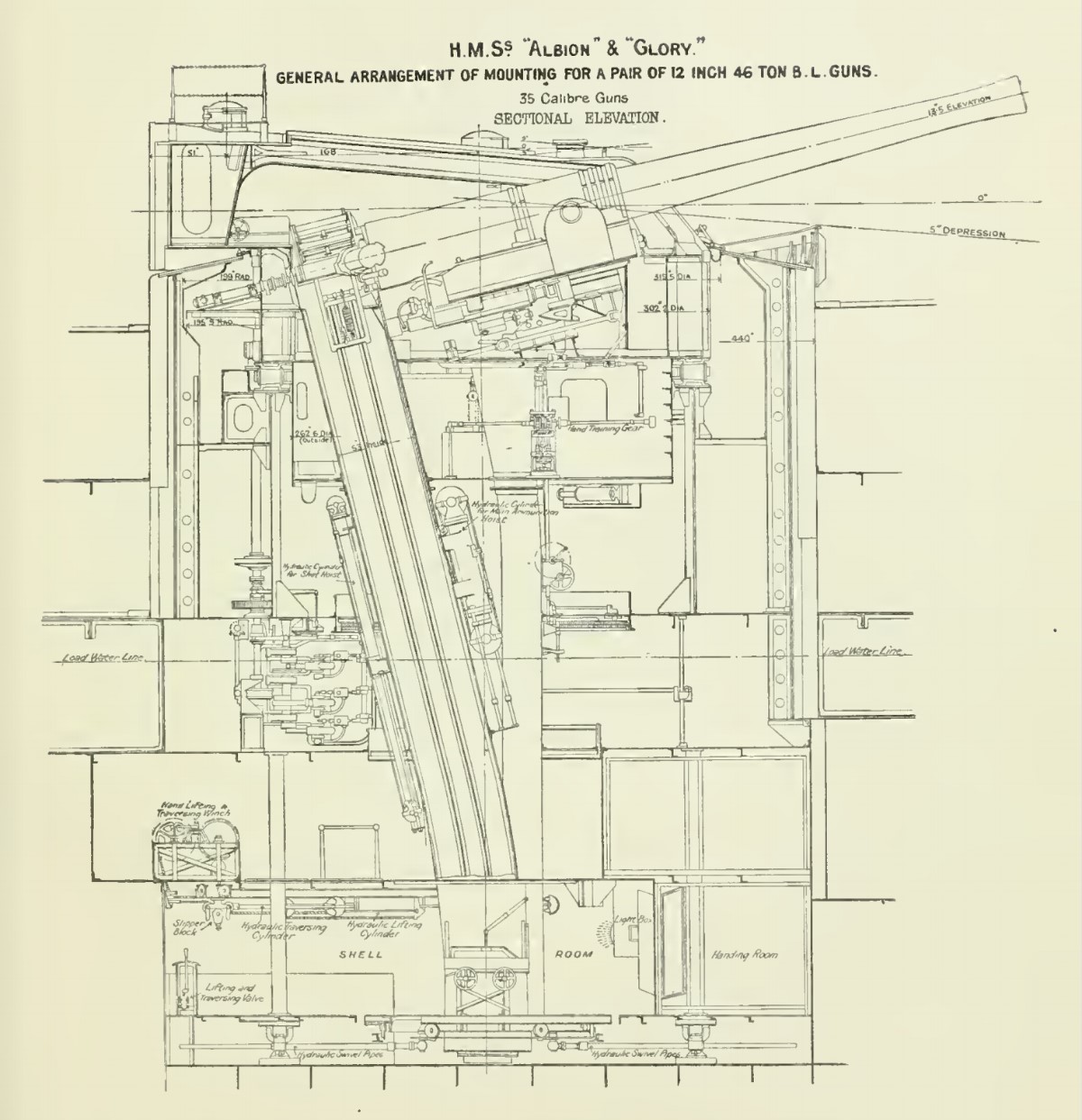
BIV Mount
It's worth taking a closer look at the BIV mounts used on Albion and Glory of the Canopus class. These were the first mounts with full hoists from the magazine to the gun. Each gun had a single hoist with a combined cage for shell and powder. The powder charge was split up to allow the sections to be manhandled into the rotating trunk. The shells were transferred from the overhead rails in the shell room onto a turntable, which would align them with the hoists. The cages were then sent up, aligning with the gun at 13.5 degrees. The shell was rammed first, followed by the powder charges, and the cage sent back down.
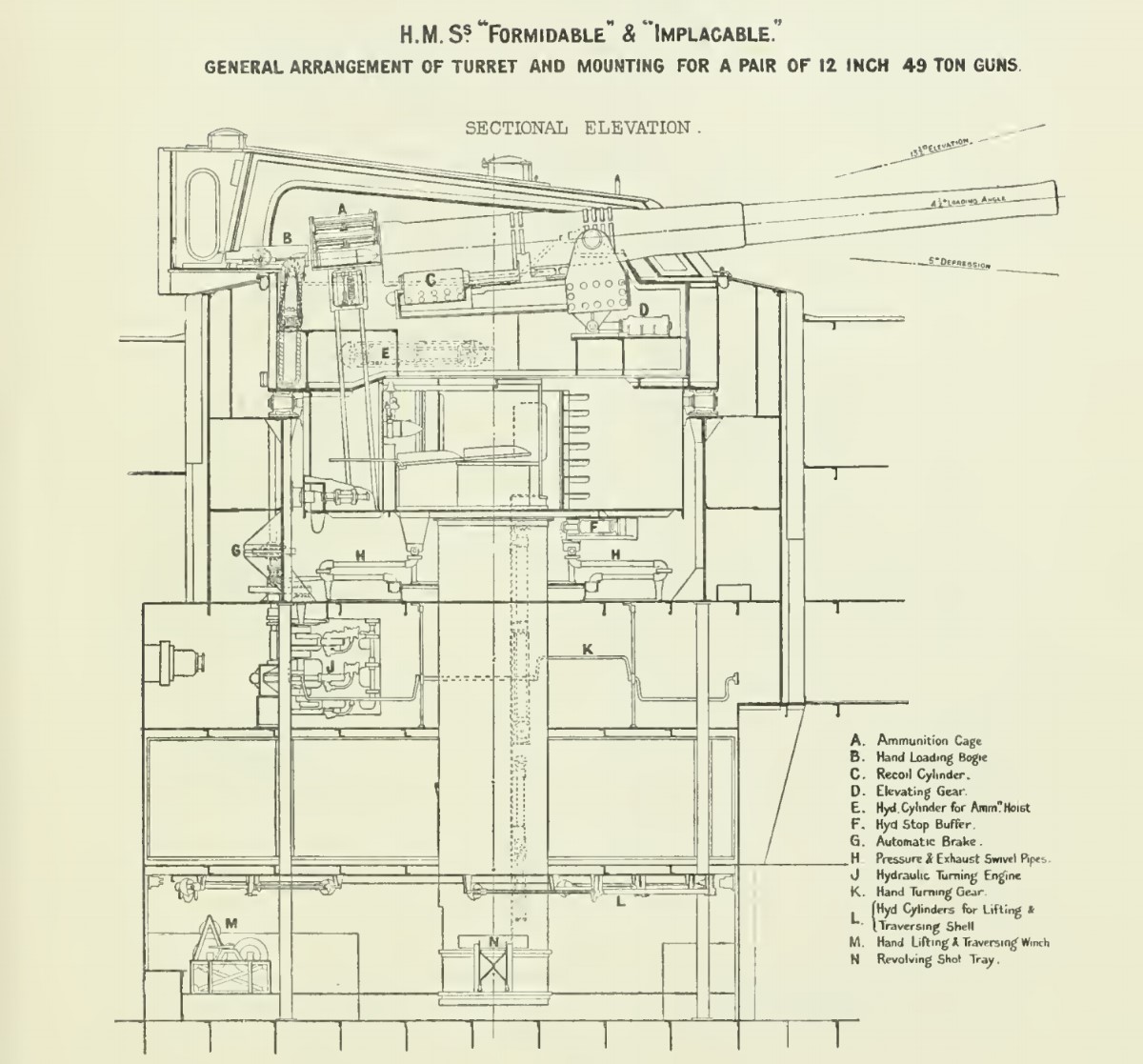
BVI Mount
The biggest drawback to this arrangement was that the single hoist limited the firing rate, as it couldn't be sent back down until the gun was fully loaded. To solve this, they introduced a split chamber on the next mount in sequence, the BVI.2 This introduced the working chamber, a staple of British design for the rest of the battleship era. Instead of running the hoist all the way from the magazine to the breech, it was split into a hoist running from the magazine to the working chamber, where the shells were tipped off and the powder rolled into racks, and another hoist that collected them and hoisted them up into alignment with the breech.
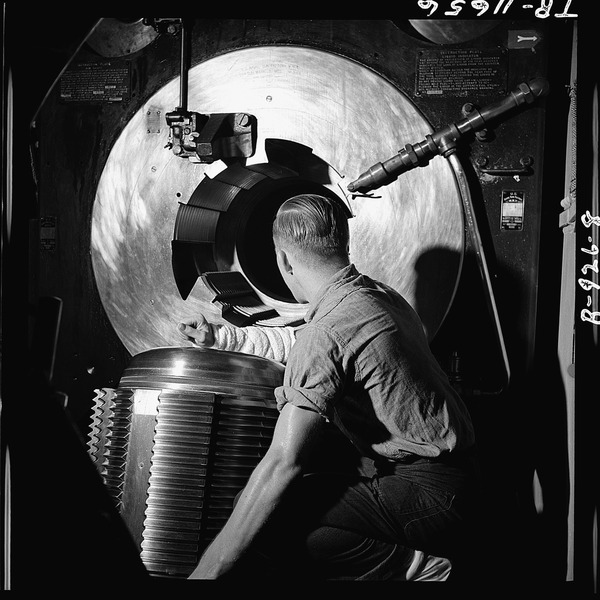
Welin Breechblock onboard USS New Jersey3
The mount came with a new gun, the BL 12" Mk IX. This was a 40 caliber gun, and raised the muzzle velocity to 778 m/s. But the biggest advance was the Welin Breech Block. This was a modification of the interrupted screw, which involved multiple steps of threads, which allowed more than half of the perimeter of the breech block to be used for locking. There were three sets of threads, as well as the blank area, so it was 50% more effective per unit length than previous breech mechanisms. This allowed the breech block to be made shorter and lighter, which in turn made it faster to operate.
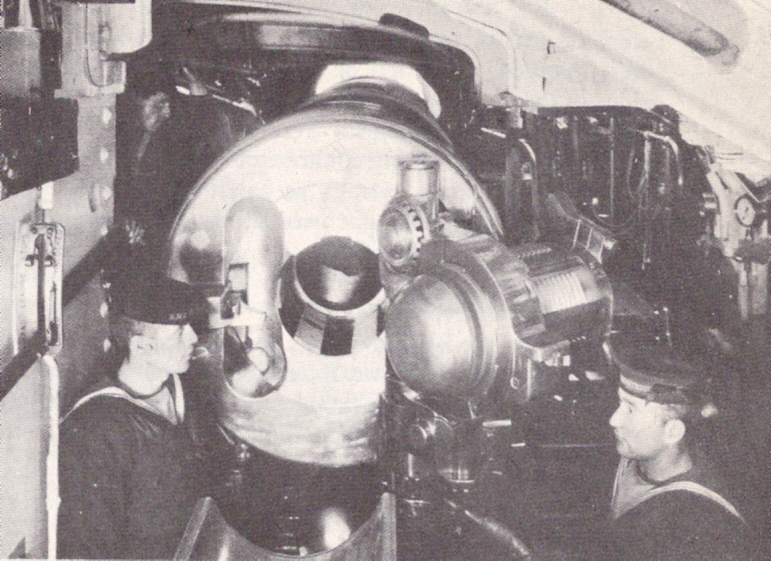
Breech of 12" gun on HMS Illustrious
This general design remained in use through the early days of the dreadnought, although there were obviously detail changes. Guns continued to grow longer, reaching 50 calibers in some cases. Other countries built slightly different arrangements. The US stuck to one-stage hoists through the end of the pre-dreadnought era, and returned to them during the dreadnought era. The French used one-stage hoists on their pre-dreadnoughts, although they passed the shells up the center of the turret, under the guns, and then moved them around and back into the breech.
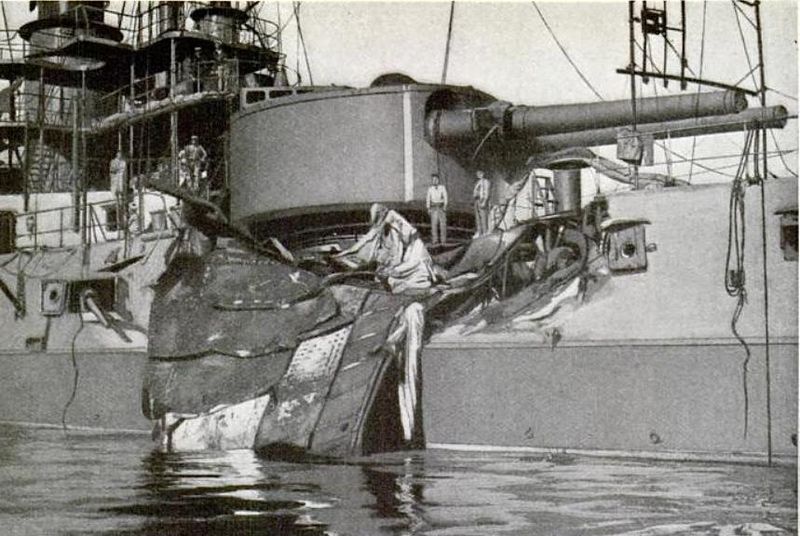
Turret of French pre-dreadnought Republique4
At the time, gun manufacture was on the leading edge of weapons technology. Predictably, this meant there were some missteps. The British struggled from as early as 1880, with the 13.5" gun of the Royal Sovereigns. They had serious problems with the liners cracking during proof firings, which delayed some ships for years. Later guns ran into a problem called "steel choke". This happened when the liner got dragged forward by the fired shells, and would be wrinkled inward where it pushed up against a shoulder in the A tube. This reduced accuracy and muzzle velocity, and in extreme cases could set off a shell prematurely. There were also guns that were just inherently problematic, like the 12"/50 fitted to the last British 12" dreadnoughts. These guns were inaccurate, mostly due to problems achieving complete combustion before the shell left the barrel, which in turn resulted in considerable variation in muzzle velocity.
While the changes in guns and gunnery from 1880 to 1910 were less obvious than those of the previous two decades, major improvements were made. Both the pre-dreadnought and the dreadnought were the result of improvements in weapons, more than anything else. Next time, we'll look at the bigger-caliber guns that began to be adopted around 1910, and the development of the turret in the later dreadnoughts.
1 I promise I'm not making this up. The Late Victorian RN gets a lot of flack, mostly unfair, for being too conservative. But at least a few Admirals of that era were really weird. ⇑
2 The BV was closely related to the BVII for some strange reason. Also, I don't have a good diagram. ⇑
3 I couldn't find a picture of Iowa's breechblock. ⇑

Comments
Seems like fixed-angle loading would have added an interesting tactical twist, tying your rate of fire to your heading... though I suppose the effects on the fore and aft guns would tend to cancel out.
The real fun might have been if fixed-angle loading persisted into the Dreadnought era, as if their gun layout wasn't an interesting enough problem already...
I don't think fixed-angle loading would have been able to persist that long. It worked when the guns were slow-loading, because the time taken to train in and out was relatively small. As the mechanisms got faster, they had to go to all-angle to keep RoF up.
Bean these are great tutorials. Please keep up the good work! Do you have all your writings in one place so we could start at the beginning? I am passing this link along to others. Really good stuff here! Neal
Thank you.
There isn’t really a beginning per se. My goal is to make it possible to start in any number of places, depending on what you’re interested in. That said, the places to start would be A Brief History of the Battleship and then the Topical Index.
Thanks Bean.
I know time is always in short supply in life, but your writings would make for a great e-book. I know there are hundreds, if not thousands,of books about naval vessels out there, but what you serve up is just the right-sized portion for the layperson (and higher of course) who finds these engineering marvels worthy of our reading opportunities.
I wouldn't rule out publishing in some form, but there's a lot of topics I'd like to cover first. My biggest goal would probably be the completion of the battleship design history series, which could take a while.